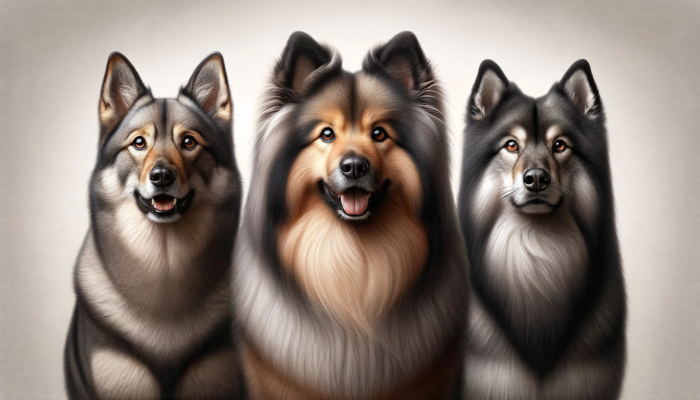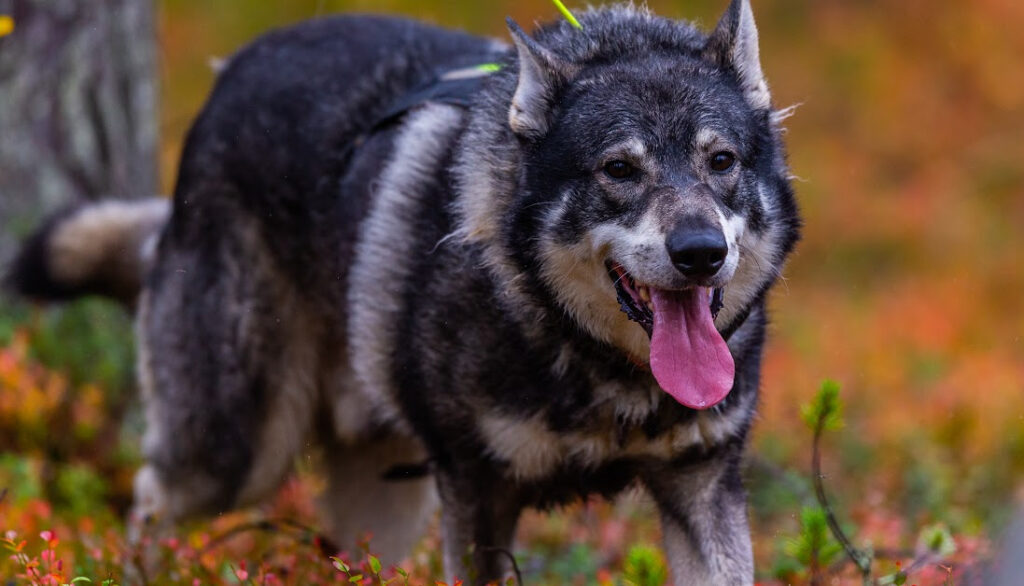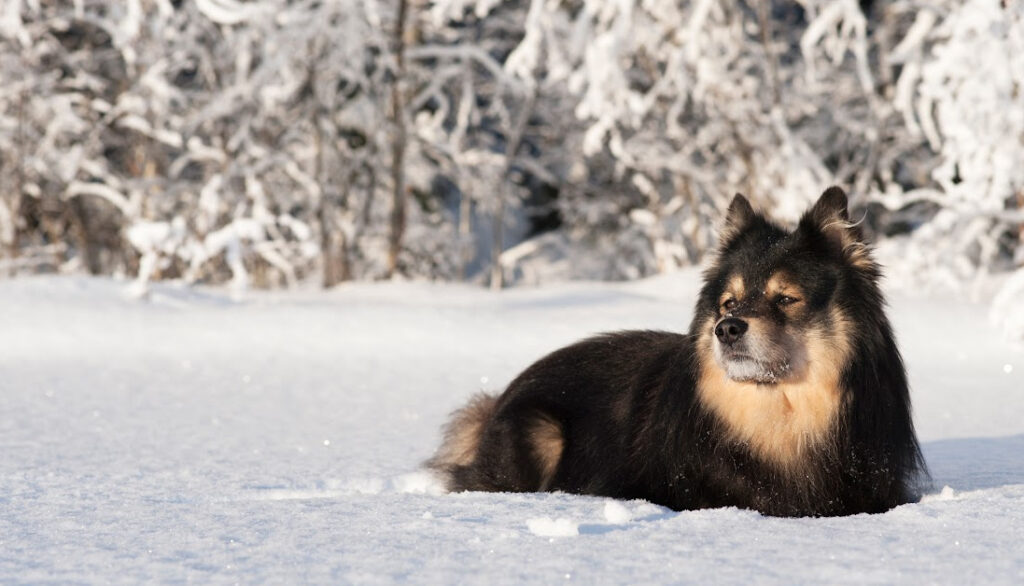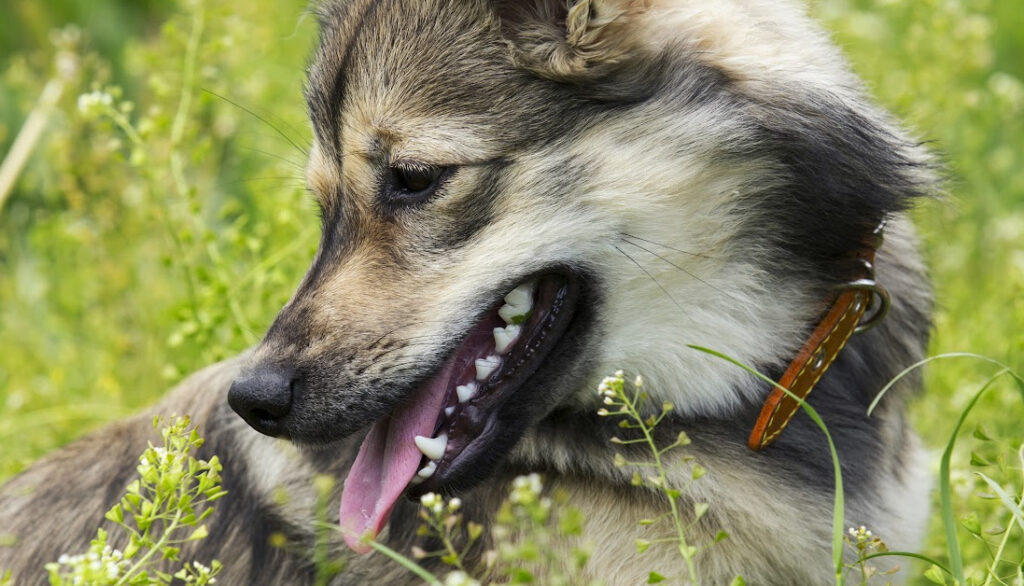Introduction to Swedish Dog Breeds
Let’s embark on an exciting journey, as we take a closer look at the heritage and uniqueness that characterizes Swedish dog breeds. Each of these breeds, steeped in history, tells a captivating story of their evolution, playing significant roles in the Swedish lifestyle and culture. It’s no surprise that Swede’s love their four-legged companions – they’re more than just pets, they’re family.

Swedish dog breeds hold a special place in my heart due to their distinctive characteristics. From their incredible adaptability to harsh climates to their unparalleled hunting skills, these dogs are truly remarkable. It’s awe-inspiring to see how these breeds have evolved over the centuries, shaped by their historical roles and the picturesque, varied landscapes of Sweden.
Key figures in Swedish history have played significant roles in shaping these breeds, from kings who treasured hunting with their faithful elkhounds, to farmers who relied on their vallhund’s herding abilities. These stories are not just about dogs, but also about the people who bred, trained, and loved them.
Whether you’re considering bringing a Swedish dog breed into your home, or you’re simply a dog enthusiast keen to learn more about these fascinating breeds, this article will provide a deep dive into what makes these breeds stand out. From the popular to the lesser-known, we’ll explore the traits, history, and quirks that make Swedish dogs so cherished. By the end of our journey, you’ll understand why preserving these breeds is a matter of national pride and an important initiative in Sweden.
So, get cozy and let’s celebrate the beauty and charm of these amazing Swedish canine companions!

History and Origin of Swedish Dog Breeds
Get ready to embark on a fascinating journey into the past. The tale of Swedish dog breeds unfurls like a rich tapestry, woven with threads of survival, camaraderie, and the indomitable spirit of these remarkable animals.
The Evolution of Dog Breeding in Sweden
Sweden’s relationship with dogs is as ancient as it is enduring. Early settlements dating back to the Bronze Age depict dogs as integral members of human communities. The Vikings, known for their seafaring prowess, often had dogs on their longships, symbolizing the longstanding bond between man and beast.
As the land and climate of Sweden are varied, from the Arctic north to the temperate south, the breeds that developed here were shaped by the diverse environments they evolved in. This resulted in a range of dogs, each uniquely suited to the tasks at hand, whether herding, hunting, or companionship.
For instance, breeds like the Swedish Vallhund trace their ancestry back to the Viking era. These hardy little dogs were bred for herding cattle and are renowned for their intelligence and agility. Similarly, the Swedish Lapphund, bred by the indigenous Sami people, was designed to withstand the harsh Arctic conditions while herding reindeer. These breeds’ evolution showcases the ingenuity of early Swedish communities in creating canines that perfectly fit their lifestyle and needs.
Key Historical Figures and Moments in Swedish Canine History
In the 19th century, Sweden’s dog breeding underwent a significant change. A surge of interest in hunting and shooting sports led to the development of gun dogs, such as the Swedish Elkhound. This breed, known for its excellent scent tracking ability, played a crucial role in hunting elk and other large game, demonstrating the ongoing adaptation of Swedish dogs to their changing environment.
One historical figure that left an indelible mark on Swedish canine history is Carl XVI Gustaf of Sweden. An avid dog lover, the king’s fascination with dogs led to the establishment of the Swedish Kennel Club in 1889, dedicated to the preservation and promotion of native Swedish breeds.
The club played a pivotal role during World War II, where many dog breeds faced the threat of extinction. The Swedish Kennel Club spearheaded initiatives to protect and revive these breeds, ensuring that the Swedish Vallhund and others remain with us today.
In recent years, the Swedish Kennel Club continues to play a crucial role in regulating breeding standards and promoting responsible pet ownership. Their efforts have helped solidify Sweden’s reputation as a country that genuinely cherishes its canine companions.
In exploring the history and origin of Swedish dog breeds, we can appreciate the depth of the bond between the Swedes and their dogs. This bond extends from the ancient Viking and Sami cultures to modern-day Sweden, where dogs are regarded not just as pets but as cherished members of the family. As we delve deeper into specific breeds, their unique traits, and roles in Swedish society, this bond becomes even more apparent. Stay tuned as we continue to celebrate these remarkable Swedish canine breeds.
The Most Popular Swedish Dog Breeds
While Sweden may not be the first country that comes to mind when we think of dog breeds, it’s home to some of the most unique, striking, and popular dogs worldwide. This Scandinavian nation offers a diverse range of breeds, each with their unique traits and attributes that make them a favorite amongst dog lovers.
Ranking Sweden’s Favorite Canine Companions
Some of the most beloved dog breeds in Sweden include:
- The Swedish Vallhund: Also known as the ‘Viking dog,’ this breed is cherished for its friendly nature, intelligence, and striking resemblance to the Welsh Corgi. With their alert attitude and protective nature, they make both excellent companions and watchdogs.
- The Swedish Lapphund: This breed thrives in the harsh Arctic climate and is known for its adaptability, intelligence, and endurance. This breed is famously used by the Sami people for herding reindeer.
- The Swedish Elkhound: Originally bred for hunting moose, Elkhounds are strong, fearless, and resilient, with a keen sense of smell and a love for the outdoors.
Others on the list of favorites include the Hamilton Hound, the Småland Hound, and the Swedish White Elkhound, each praised for their unique traits and qualities.
What Makes These Breeds Stand Out in Sweden
The popularity of Swedish dog breeds can be attributed to their unique characteristics, adaptability, and historical significance. Each breed possesses traits that have been selectively bred over centuries to serve specific purposes, whether that’s hunting, herding, or companionship.
For instance, the Swedish Vallhund, with its alertness and agility, has been a favorite for centuries, originally serving Vikings as a herding and watchdog. Their small size, coupled with their intelligence and robust health, make them ideal family pets.
The Swedish Lapphund’s thick double coat and hardy nature help it thrive in the harsh Arctic climates, making it an ideal working dog for the indigenous Sami people.
Meanwhile, the Swedish Elkhound’s strength, endurance, and exceptional sense of smell make it a favored hunting dog, capable of tracking and holding large game like moose at bay.
These breeds’ unique traits, combined with their rich histories and strong connections to Swedish culture, make them stand out, securing their popularity not just in Sweden, but amongst dog enthusiasts worldwide.
So, whether you’re looking for a loyal companion, a robust working dog, or a skilled hunting ally, the diverse range of Swedish dog breeds is sure to offer the perfect match.
List of Swedish Dog Breeds
If you’re curious about Swedish dog breeds, you’re in for a treat. Sweden has given us some truly unique and diverse dog breeds that have captured the hearts of many dog lovers worldwide. Here, we’ll delve into some of the popular and lesser-known breeds that hail from this Scandinavian country.
Comprehensive List of Sweden’s Native Breeds
Sweden’s love for dogs is evident in the variety of breeds it has produced. Let’s explore some of the most recognized Swedish dog breeds:
- Swedish Vallhund: Often called the “Viking dog,” this breed is small, robust, and fearless. They have a friendly and outgoing temperament, making them excellent companions.
- Swedish Lapphund: This breed is renowned for its adaptability to harsh climates, given its Arctic roots. They are incredibly loyal and make great family dogs.
- Swedish Elkhound: An excellent hunter and watchdog, this breed is known for its agility and strength.
- Drever: Originally bred for hunting deer, Drevers are now popular companions due to their even-tempered personalities and adaptability.
- Norrbottenspets: This small, agile breed was nearly extinct at one point but has since experienced a resurgence. They are intelligent and make good hunting and companion dogs.
- Småland Hound: This is one of the oldest scent hound breeds, known for its stamina and versatility.
Spotlight on Lesser-Known Swedish Canines
While popular breeds like the Vallhund and Lapphund often steal the spotlight, there are lesser-known Swedish dog breeds that are equally charming. For instance, the Hamiltonstövare is a Swedish breed developed for hunting fox and hare. They are known for their striking appearance and friendly disposition.
Another lesser-known breed is the Schiller Hound, a breed developed exclusively for hunting. They are known for their speed, agility, and high energy levels. They are also intelligent, making them easy to train.
The Jämthund is a large breed named after the province of Jämtland. They’re primarily used for hunting moose and bears, but their calm and friendly nature also makes them great family pets.
These unique and diverse breeds add to the richness of Sweden’s canine heritage. Whether you’re looking for a loyal companion or a versatile working dog, there’s a Swedish dog breed that will fit your lifestyle.

The Swedish Vallhund: A National Treasure
Among the various Swedish dog breeds, the Swedish Vallhund holds a special place. This breed, also known as the Västgötaspets, is a national treasure with a rich history and unique characteristics that make it stand out.
The History and Characteristics of the Vallhund
The Vallhund is believed to have been around for over a thousand years, with its lineage tracing back to the Viking era. This breed is often associated with the Swedish region of Västergötland, where it was primarily used as a herding dog for cattle and sheep.
As for its characteristics, the Vallhund is a small but sturdy breed, known for its agility and endurance. They have a double coat that is weather-resistant, making them perfectly suited for the Swedish climate. Their unique feature is their short but strong legs, which are a result of natural mutation.
Personality-wise, Vallhunds are known to be friendly, intelligent, and energetic. They are great with families and are known for their loyalty and protective nature. Their herding instincts make them alert and watchful, which also makes them excellent watchdogs.
The Vallhund’s Role in Swedish Culture and Lifestyle
In Sweden, the Vallhund is more than just a pet; it’s an integral part of the country’s culture and lifestyle. The breed’s historical significance is so profound that it has been depicted on numerous ancient artifacts, showing its long-standing relationship with the Swedish people.
Today, the Vallhund continues to be a beloved companion in many Swedish households. Their small size makes them ideal for both urban and rural living. They are also a common participant in dog sports and competitions due to their agility and intelligence.
Moreover, the Vallhund’s friendly and social nature makes them excellent therapy dogs. They are often used in hospitals, nursing homes, and schools to provide comfort and companionship to those in need.
Despite their popularity, the Vallhund breed faced near extinction in the 1940s. However, thanks to the efforts of Swedish breeders, the breed was revived and is now thriving. This is a testament to Sweden’s commitment to preserving its canine heritage.
Overall, the Swedish Vallhund is a breed that embodies the spirit of Sweden – resilient, hardworking, and friendly. Whether they’re herding cattle, competing in dog sports, or simply being a loyal companion, Vallhunds are truly a national treasure.
The Swedish Lapphund: The Arctic Companion
Understanding the Arctic heritage of the Swedish Lapphund, one of the unique Swedish dog breeds, is important for appreciating its special characteristics and capabilities. This breed has a rich history intertwined with the indigenous Sami people of the Arctic region.
Understanding the Lapphund’s Arctic Heritage
The Swedish Lapphund, one of the most exceptional Swedish dog breeds, has been a faithful companion to the Sami people for centuries. They originally served as hunting dogs but evolved into herding dogs as the Sami transitioned from hunting to reindeer herding.
The Lapphund’s thick double coat, comprised of a dense undercoat and longer topcoat, is a testament to its Arctic roots. This lavish fur enables them to endure harsh winter conditions and makes them well-suited to outdoor activities and adventures. However, the Lapphund’s Arctic heritage is not just about its physical features; it is equally about its hardworking nature. A natural herder, the Lapphund is known for its tireless energy, intelligence, and adaptability.
The Lapphund’s Adaptability and Temperament
Lapphunds are not just work-oriented; they are equally known for their friendly and playful personality. These dogs are sociable and get along well with both humans and other animals. They are excellent with children, making them an ideal family pet.
Despite their high energy levels, Lapphunds are adaptable and can adjust to various living conditions. Whether you live in a countryside home with plenty of open space or a city apartment, a Lapphund will comfortably fit in. However, due to their active nature, they do require regular exercise to keep them happy and healthy.
These dogs are also very intelligent and highly trainable, but their intelligence means they can be a bit stubborn at times. Therefore, they need an owner who can provide firm, consistent training from a young age. Their intelligence also makes them excellent at problem-solving. They can easily figure out how to open doors or get to that treat you thought was out of reach!
In summary, the Swedish Lapphund, with its rich Arctic heritage, adaptability, and friendly nature, is certainly one of the fascinating Swedish dog breeds. Whether you’re looking for a hardworking herding dog, an energetic companion for outdoor adventures, or a loving family pet, the Lapphund is a breed worth considering.

Swedish Elkhound: A Hunter’s Ally
When it comes to Swedish dog breeds, one cannot overlook the Swedish Elkhound, a breed with a rich hunting heritage. Stepping into the world of this remarkable breed, one will uncover a legacy of strength, endurance, and unparalleled companionship.
The Elkhound’s Hunting Prowess and History
The Swedish Elkhound, also known as Jämthund, is a large Spitz-type breed, primarily recognized for its prowess as a hunting dog. Bred for hunting large game like moose, wolves, and bears, these dogs are renowned for their vigor and resilience. Equipped with a thick double coat, a hallmark of many Swedish dog breeds, these dogs are built to withstand harsh Nordic climates.
Delving into the history of the breed, the Swedish Elkhound has been a trusted ally of hunters for centuries. They were first recognized as a distinct breed in the early 20th century, though their lineage traces back much further. Their keen sense of smell, robust build, and boundless stamina made them a favored choice among hunters. The Elkhound’s job was to track and corner the game, barking loudly to alert the hunter to its location, a trait they still retain today.
Physical Traits and Personality of the Swedish Elkhound
Swedish Elkhounds are robust, sturdy dogs, typically weighing around 50-60 pounds. They are characterized by a broad, wedge-shaped head, erect ears, and a lush, curled tail. Their dense coat comes in a variety of shades, ranging from light grey to black. Their striking physical attributes often make them standout participants in dog shows and exhibitions.
But beyond their physical traits, the Swedish Elkhound is also recognized for its distinct personality. Renowned for their courage and tenacity in the hunting field, they are equally famous for their loyal and friendly nature at home. Elkhounds are known for being excellent family pets, showing great affection towards their humans and getting along well with children.
Elkhounds are also very intelligent dogs with a strong instinct to protect their family. Their alertness and watchful nature make them excellent guard dogs. But, they also have a playful side and enjoy being part of family activities. Training an Elkhound requires patience and consistency due to their independent nature. However, they are keen to please their owners, making them relatively easy to train with the right approach.
When considering Swedish dog breeds, the Elkhound’s incredible combination of hunting skills, physical prowess, and a loving personality truly sets them apart. As a testament to Sweden’s rich canine heritage, the Swedish Elkhound shines as a symbol of the country’s dog breeding traditions, embodying both the demanding conditions of the Nordic wilderness and the warmth of a family home.
Preserving Swedish Dog Breeds: Conservation Efforts
Sweden is home to some of the most unique dog breeds in the world. These precious animals not only represent a valuable part of the country’s heritage, but they also play a crucial role in the lives of many Swedish families. However, some of these breeds are now facing a variety of challenges that could threaten their survival.
Initiatives for Protecting Sweden’s Canine Heritage
Fortunately, there are numerous initiatives underway to protect and preserve Swedish dog breeds. The Swedish Kennel Club, for instance, has been instrumental in these efforts, working tirelessly to promote responsible dog ownership and breeding practices. Here are some of the measures they have undertaken:
- Preservation Breeding Programs: These programs focus on maintaining the genetic diversity and health of Swedish dog breeds, helping to ensure their survival for future generations.
- Educational Campaigns: The Club runs campaigns to educate the public about the unique qualities and care requirements of Swedish dog breeds. This helps to increase interest in these breeds and encourages responsible ownership.
- Funding for Research: They also provide funding for scientific research into canine genetics and health, which can lead to improved breeding and care practices.
The Role of Breed Clubs and Organizations in Sweden
Breed clubs and organizations play a pivotal role in the conservation efforts. These groups, often run by dedicated volunteers, work to promote their respective breeds and provide resources for owners. Some of their crucial contributions include:
- Organizing Breed-Specific Events: Events like dog shows and competitions help to raise awareness of the breed, attract potential owners, and fundraise for various initiatives.
- Providing Breed Information and Resources: Breed clubs often have extensive resources on their websites, offering information on the breed’s history, characteristics, and care requirements. This helps prospective owners understand what to expect and how to care for these dogs.
- Offering Breed-Specific Rescues: Some breed clubs run rescue organizations for their breed, helping to rehome dogs in need and providing them with a second chance at life.
Preserving Swedish dog breeds is a labor of love for many individuals, organizations, and clubs. Their tireless efforts ensure that these unique breeds continue to thrive and bring joy to many households. In a way, every Swedish dog breed owner is a part of this conservation effort, contributing to the preservation of these breeds through responsible ownership and breeding.
Sweden’s cherished canine breeds are not just pets; they are living links to the country’s past, embodying centuries of history and tradition. As such, they are worth every effort to preserve and protect. So, whether you are a proud owner of a Swedish Vallhund or simply an admirer of these amazing dogs, we can all play a part in celebrating and conserving Sweden’s canine heritage.
Frequently Asked Questions
Q1: What are some popular Swedish dog breeds?
A: Some popular Swedish dog breeds include the Swedish Vallhund, Swedish Elkhound, and the Swedish Lapphund.
Q2: Are Swedish dog breeds good for families?
A: Yes, most Swedish dog breeds are known for their friendly and loyal nature, making them great for families.
Q3: How do I care for a Swedish dog breed?
A: Care for a Swedish dog breed involves regular exercise, a balanced diet, and regular vet check-ups. Specific care may vary depending on the breed.
Q4: Are Swedish dog breeds hypoallergenic?
A: Not all Swedish dog breeds are hypoallergenic. It’s best to research specific breeds or consult with a vet if allergies are a concern.
Q5: Where can I adopt a Swedish dog breed?
A: You can adopt a Swedish dog breed from a reputable breeder or through rescue organizations that focus on specific breeds.
Dr. Candy, a holistic veterinarian and certified raw dog food nutrition specialist, graduated from Oklahoma State University in 2009 with a DVM and has since specialized in companion animal nutrition, advocating for species-specific diets. With a background in wildlife rehabilitation and oil spill response, she combines holistic health and conventional medicine in her unique approach to treating chronic diseases, allergies, and autoimmune conditions in pets. As the owner of a veterinary practice in Colorado and an author, Dr. Candy is dedicated to educating pet parents and improving the health and happiness of animals.




